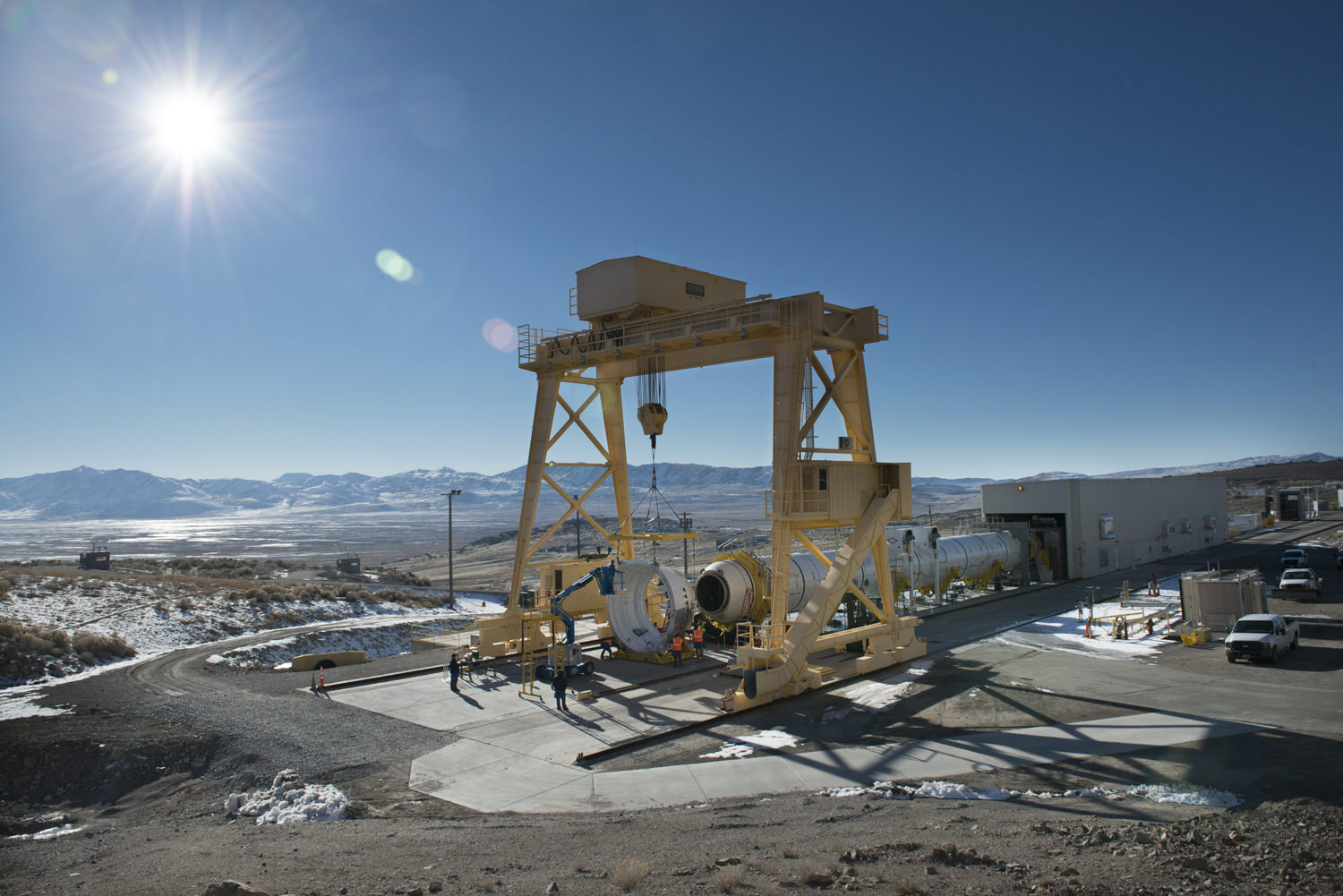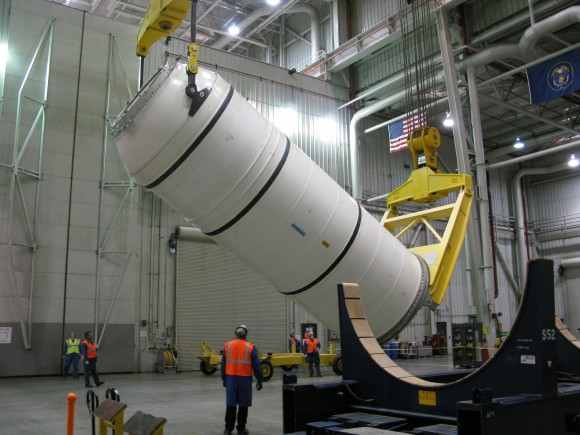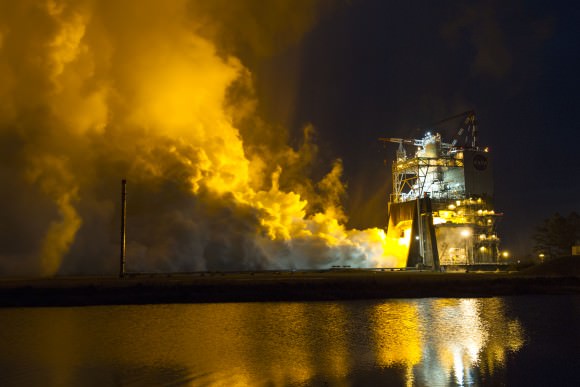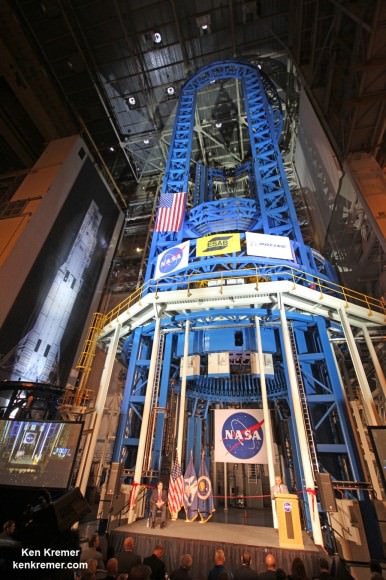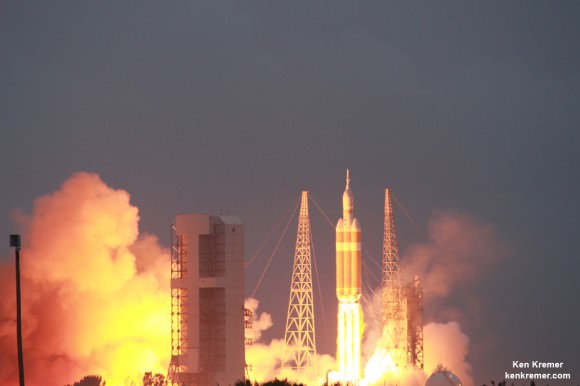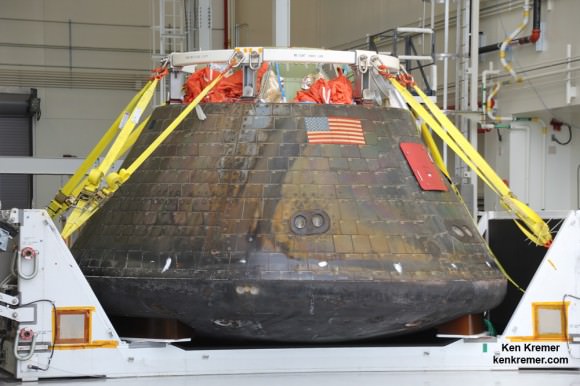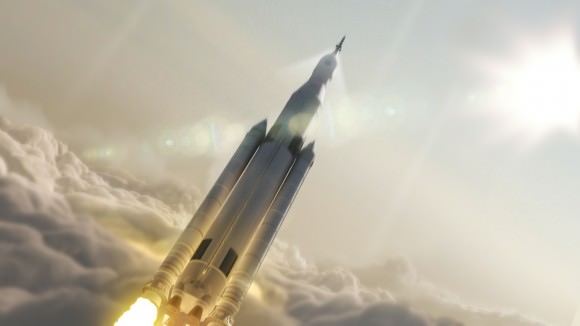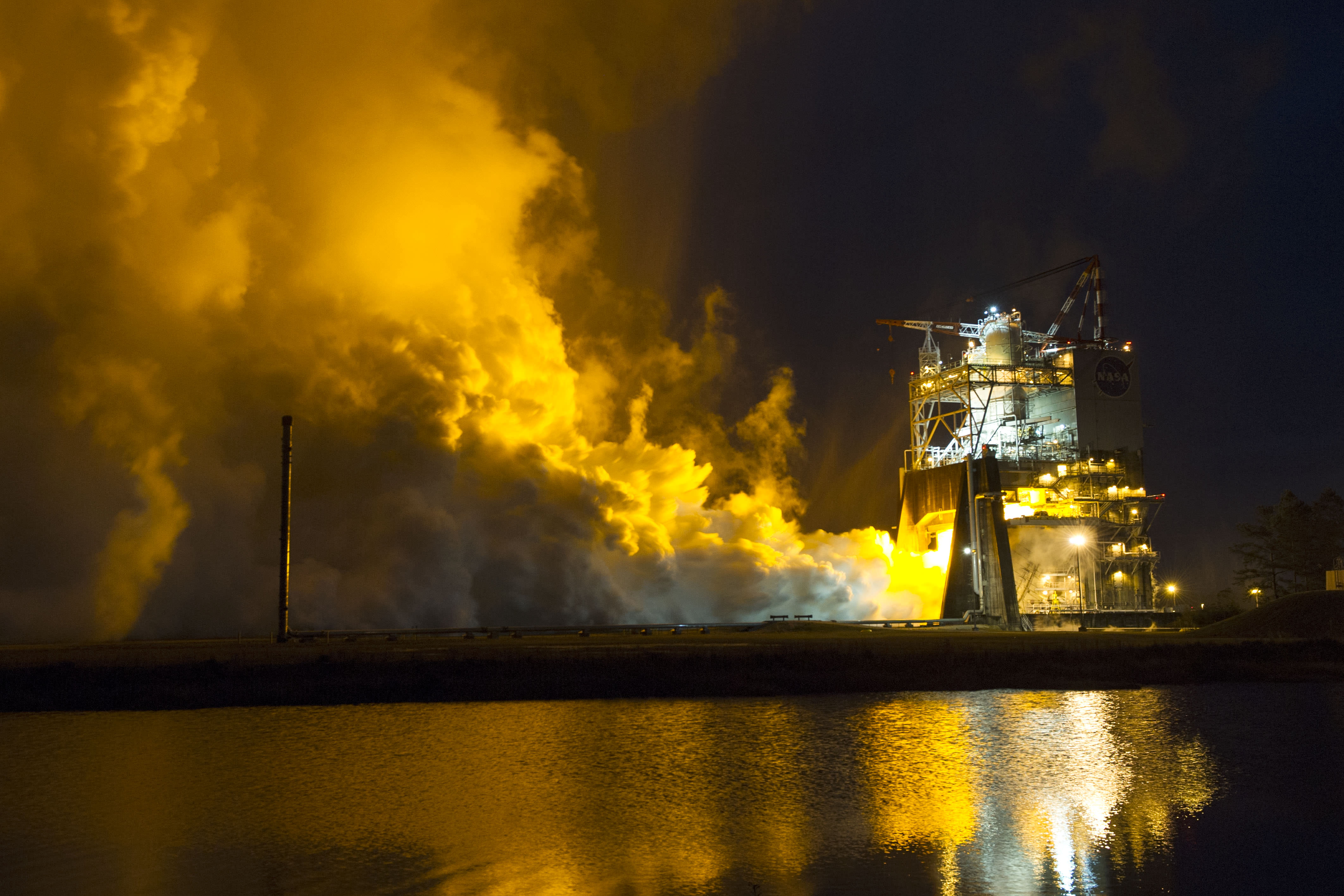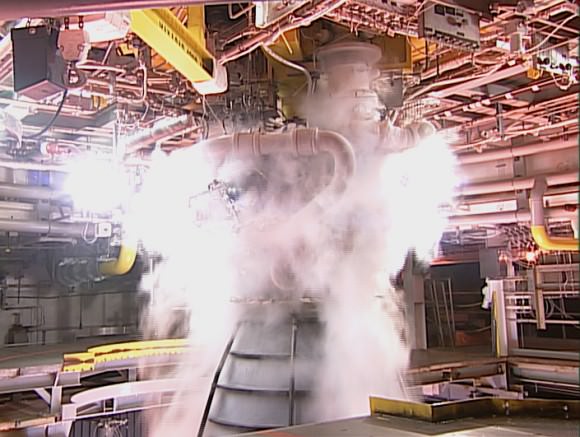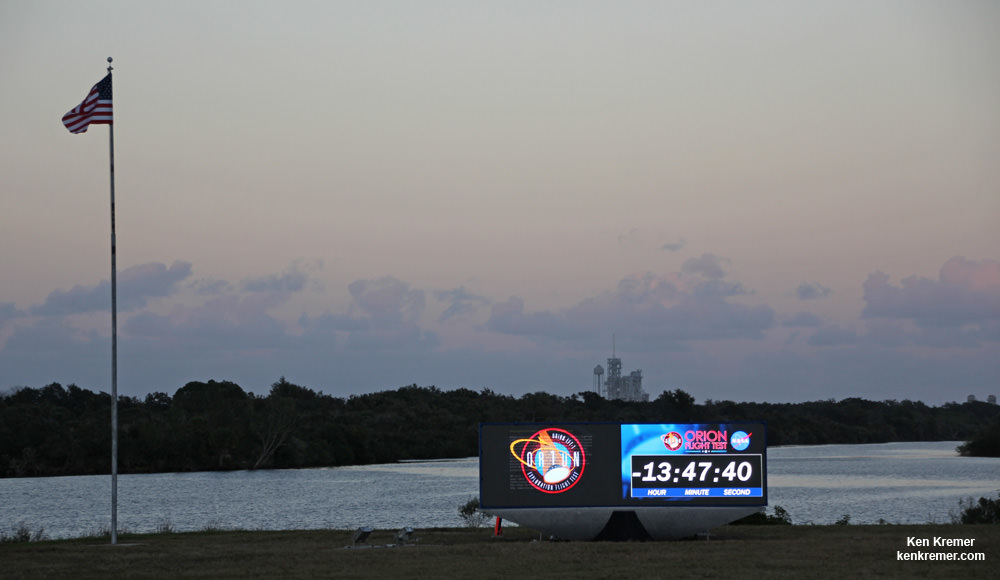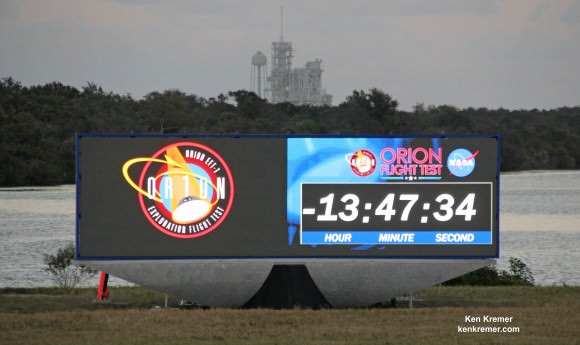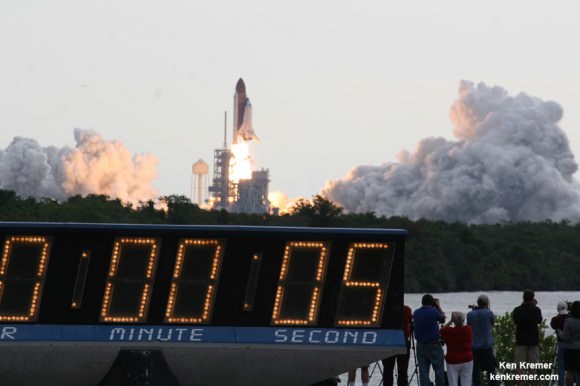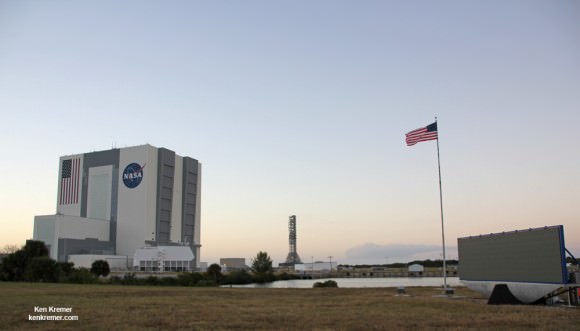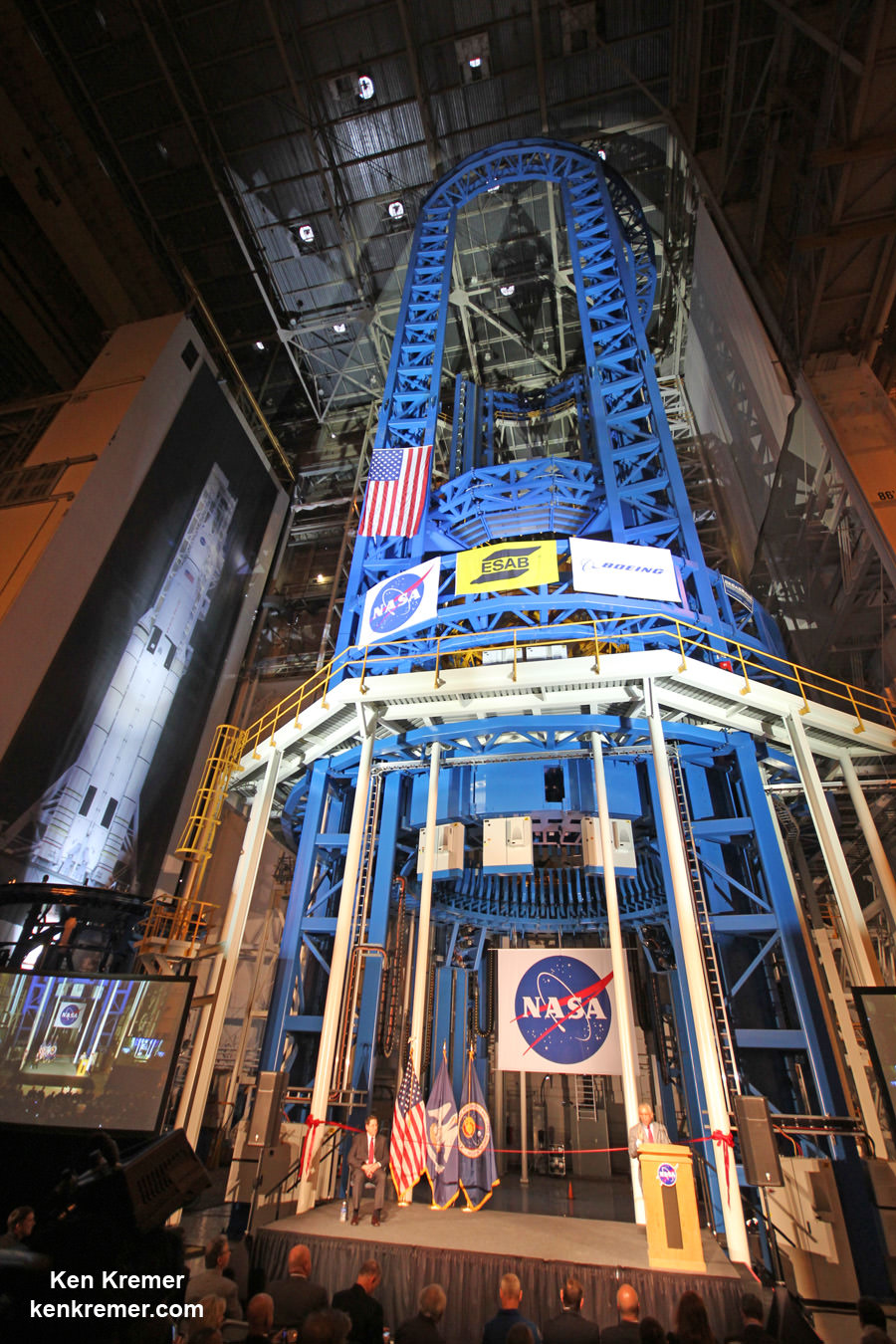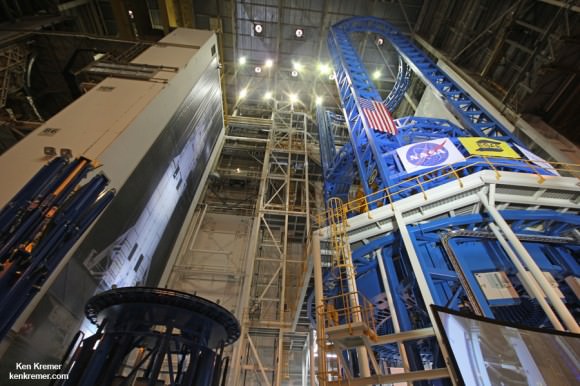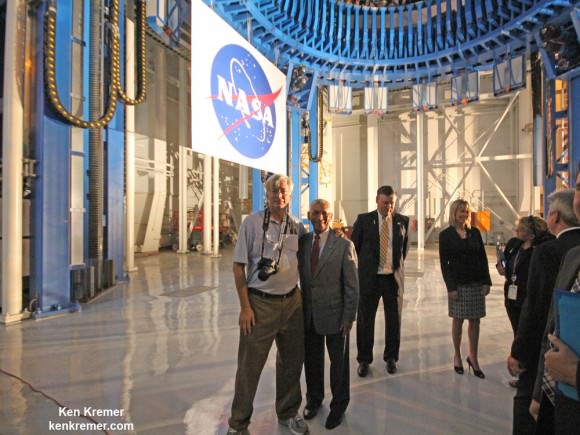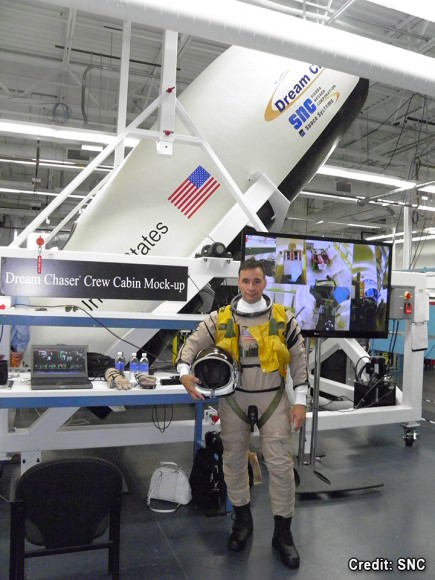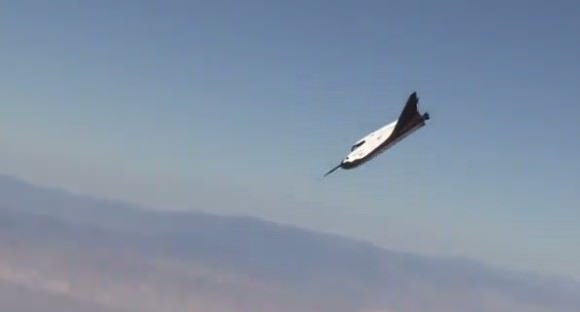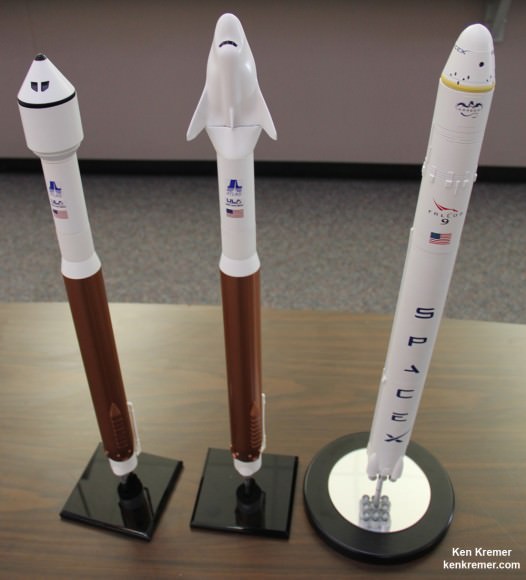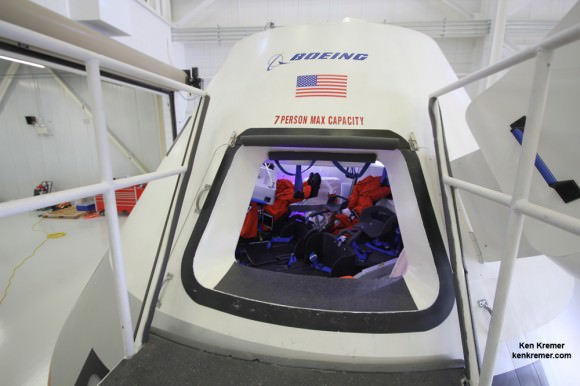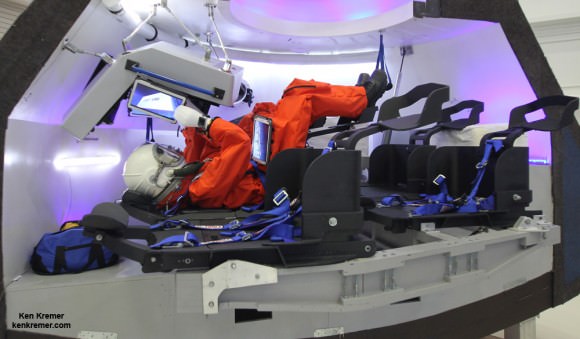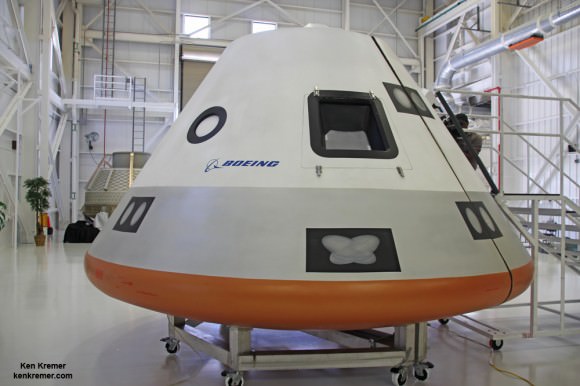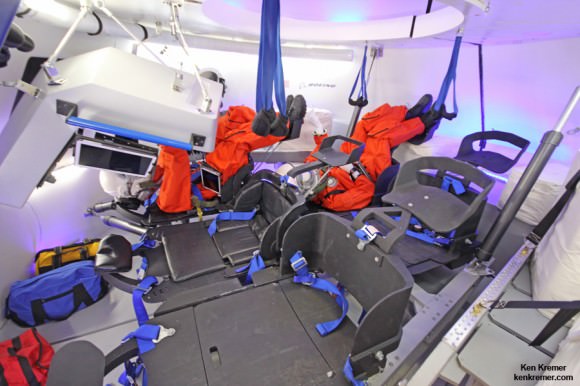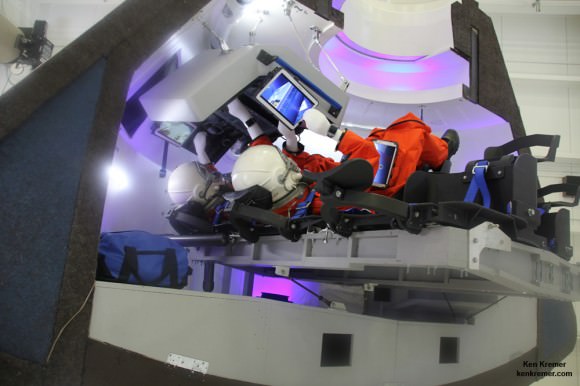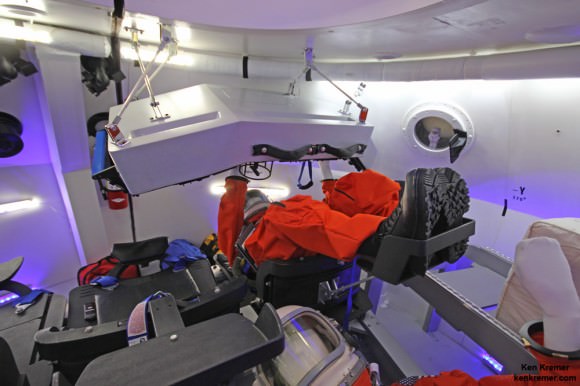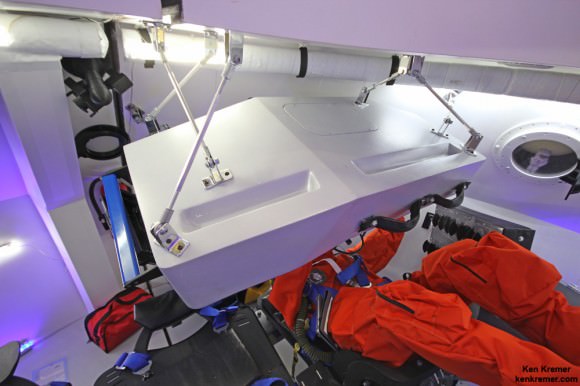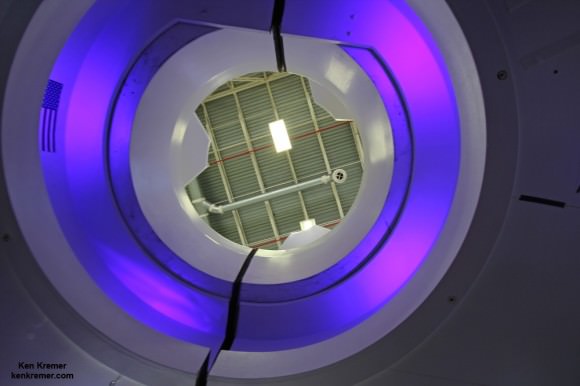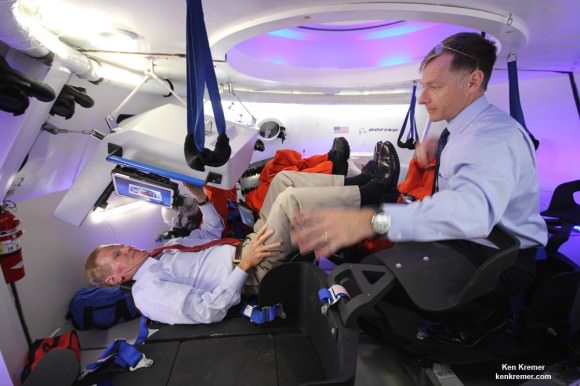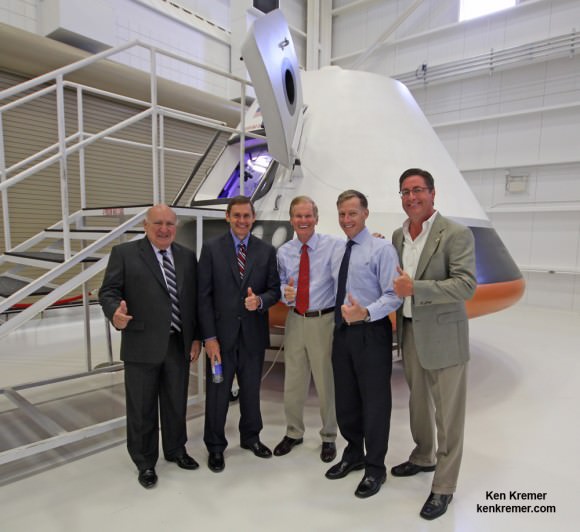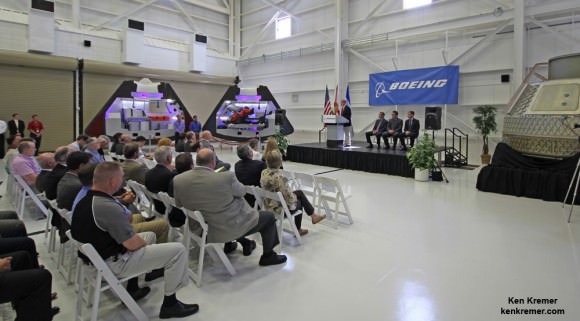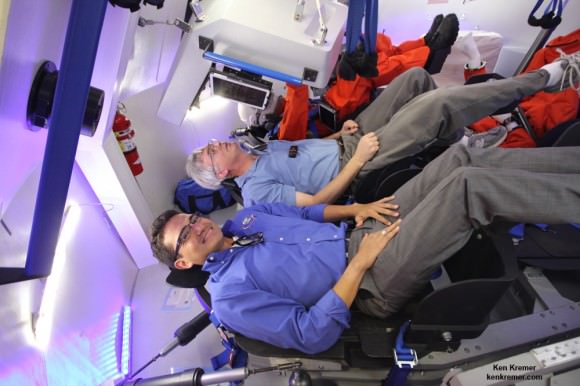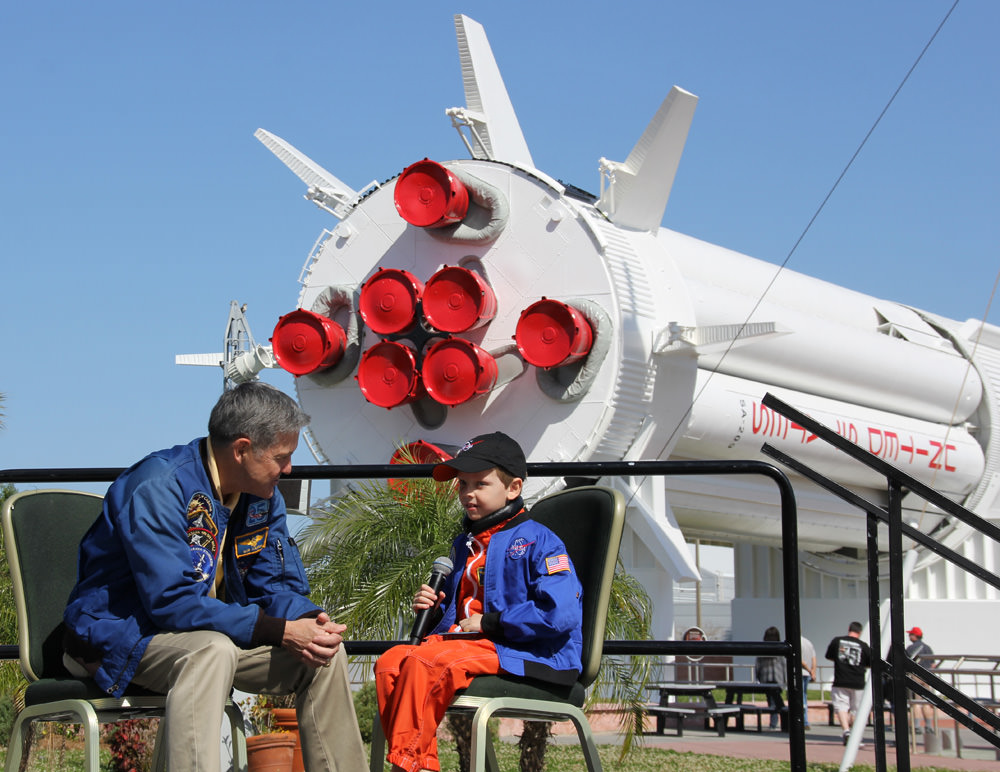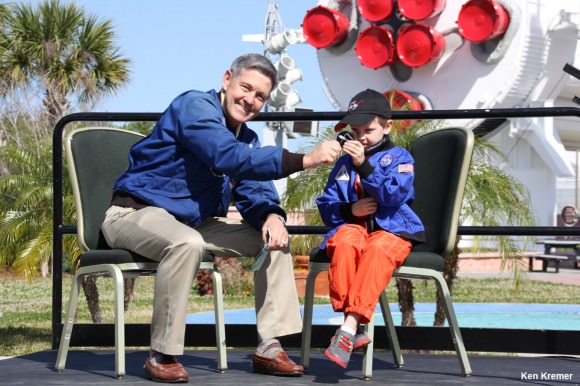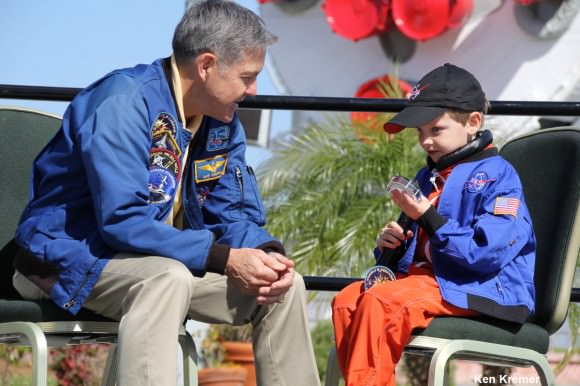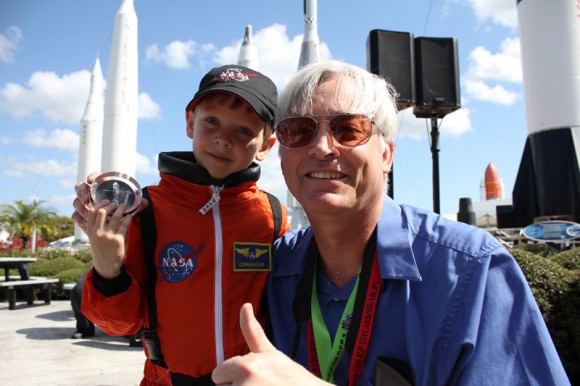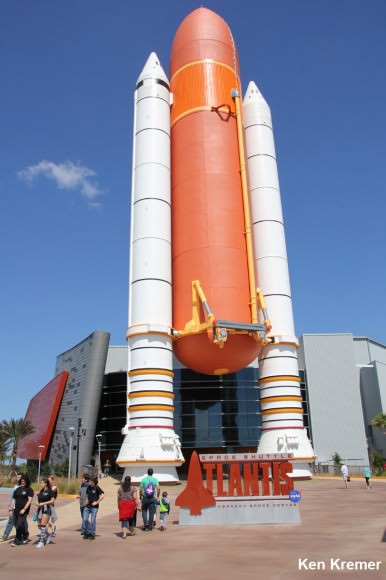In the past four decades, NASA and other space agencies from around the world have accomplished some amazing feats. Together, they have sent manned missions to the Moon, explored Mars, mapped Venus and Mercury, conducted surveys, and captured breathtaking images of the Outer Solar System. However, looking ahead to the next generation of exploration and the more-distant frontiers that remain to be explored, it is clear that new ideas need to be put forward on how to quickly and efficiently reach those destinations.
Basically, this means finding ways to power rockets that are more fuel and cost-effective while still providing the necessary power to get crews, rovers, and orbiters to their far-flung destinations. In this respect, NASA has been taking a good look at nuclear fission as a possible means of propulsion.
In fact, according to a presentation made by Doctor Michael G. Houts of the NASA Marshall Space Flight Center back in October of 2014, nuclear power and propulsion have the potential to be “game-changing technologies for space exploration.”
As the Marshall Space Flight Center’s manager of nuclear thermal research, Dr. Houts is well-versed in the benefits it has to offer space exploration. According to the presentation he and fellow staffers made, a fission reactor can be used in a rocket design to create Nuclear Thermal Propulsion (NTP). In an NTP rocket, uranium or deuterium reactions are used to heat liquid hydrogen inside a reactor, turning it into ionized hydrogen gas (plasma), which is then channeled through a rocket nozzle to generate thrust.
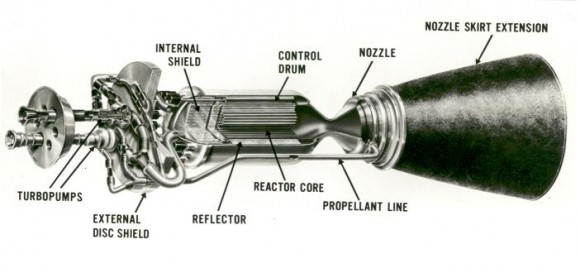
A second possible method, known as Nuclear Electric Propulsion (NEP), involves the same basic reactor converting its heat and energy into electrical energy which then powers an electrical engine. In both cases, the rocket relies on nuclear fission to generate propulsion rather than chemical propellants, which has been the mainstay of NASA and all other space agencies to date.
Compared to this traditional form of propulsion, both NTP and NEP offer a number of advantages. The first and most obvious is the virtually unlimited energy density it offers compared to rocket fuel. At a steady state, a fission reactor produces an average of 2.5 neutrons per reaction. However, it would only take a single neutron to cause a subsequent fission and produce a chain reaction and provide constant power.
In fact, according to the report, an NTP rocket could generate 200 kWt of power using a single kilogram of uranium for a period of 13 years – which works out to a fuel efficiency rating of about 45 grams per 1000 MW-hr.
In addition, a nuclear-powered engine could also provide superior thrust relative to the amount of propellant used. This is what is known as specific impulse, which is measured either in terms of kilo-newtons per second per kilogram (kN·s/kg) or in the amount of seconds the rocket can continually fire. This would cut the total amount of propellent needed, thus cutting launch weight and the cost of individual missions. And a more powerful nuclear engine would mean reduced trip times, another cost-cutting measure.
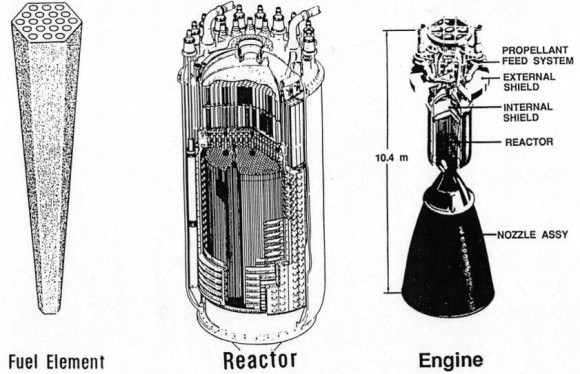
Although no nuclear-thermal engines have ever flown, several design concepts have been built and tested over the past few decades, and numerous concepts have been proposed. These have ranged from the traditional solid-core design to more advanced and efficient concepts that rely on either a liquid or a gas core.
In the case of a solid-core design, the only type that has ever been built, a reactor made from materials with a very high melting point houses a collection of solid uranium rods which undergo controlled fission. The hydrogen fuel is contained in a separate tank and then passes through tubes around the reactor, gaining heat and converted into plasma before being channeled through the nozzles to achieve thrust.
Using hydrogen propellant, a solid-core design typically delivers specific impulses on the order of 850 to 1000 seconds, which is about twice that of liquid hydrogen-oxygen designs – i.e. the Space Shuttle’s main engine.
However, a significant drawback arises from the fact that nuclear reactions in a solid-core model can create much higher temperatures than conventional materials can withstand. The cracking of fuel coatings can also result from large temperature variations along the length of the rods, which taken together, sacrifices much of the engine’s potential for performance.
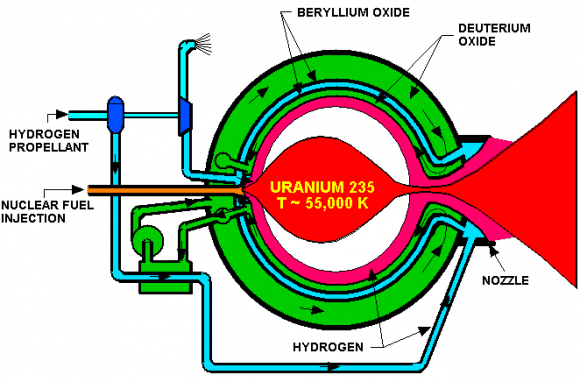
Many of these problems were addressed with the liquid core design, where nuclear fuel is mixed into the liquid hydrogen and the fission reaction takes place in the liquid mixture itself. This design can operate at temperatures above the melting point of the nuclear fuel, thanks to the fact that the container wall is actively cooled by the liquid hydrogen. It is also expected to deliver a specific impulse performance of 1300 to 1500 (1.3 to 1.5 kN·s/kg) seconds.
However, compared to the solid-core design, engines of this type are much more complicated and therefore more expensive and difficult to build. Part of the problem has to do with the time it takes to achieve a fission reaction, which is significantly longer than the time it takes to heat the hydrogen fuel. Therefore, engines of this kind require methods to trap the fuel inside the engine while simultaneously allowing heated plasma the ability to exit through the nozzle.
The final classification is the gas-core engine, a modification of the liquid-core design that uses rapid circulation to create a ring-shaped pocket of gaseous uranium fuel in the middle of the reactor that is surrounded by liquid hydrogen. In this case, the hydrogen fuel does not touch the reactor wall, so temperatures can be kept below the melting point of the materials used.
An engine of this kind could allow for specific impulses of 3000 to 5000 seconds (30 to 50 kN·s/kg). But in an “open-cycle” design of this kind, the losses of nuclear fuel would be difficult to control. An attempt to remedy this was drafted with the “closed cycle design” – aka. the “nuclear lightbulb” engine – where the gaseous nuclear fuel is contained in a series of super-high-temperature quartz containers.
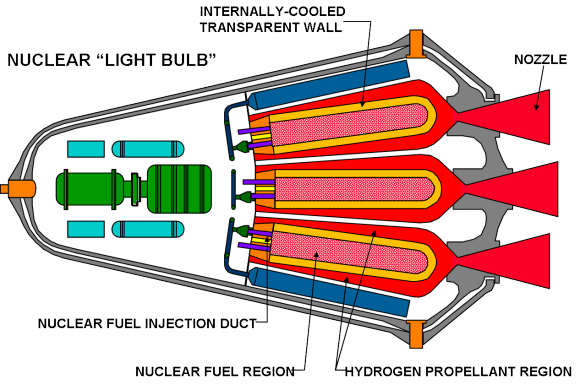
Although this design is less efficient than the open-cycle design and has more in common with the solid-core concept, the limiting factor here is the critical temperature of quartz and not that of the fuel stack. What’s more, the closed-cycle design is expected to still deliver a respectable specific impulse of about 1500–2000 seconds (15–20 kN·s/kg).
However, as Houts indicated, one of the greatest assets nuclear fission has going for it is the long history of service it has enjoyed here on Earth. In addition to commercial reactors providing electricity all over the world, naval vessels (such as aircraft carriers and submarines) have made good use of slow-fission reactors for decades.
Also, NASA has been relying on nuclear reactors to power unmanned craft and rovers for over four decades, mainly in the form of Radioisotope Thermoelectric Generators (RTGs) and Radioisotope Heater Units (RHU). In the case of the former, heat is generated by the slow decay of plutonium-238 (Pu-238), which is then converted into electricity. In the case of the latter, the heat itself is used to keep components and ship systems warm and running.
These types of generators have been used to power and maintain everything from the Apollo rockets to the Curiosity Rover, as well as countless satellites, orbiters and robots in between. Since its inception,a total of 44 missions have been launched by NASA that have used either RTGs or RHUs, while the former-Soviet space program launched a comparatively solid 33.
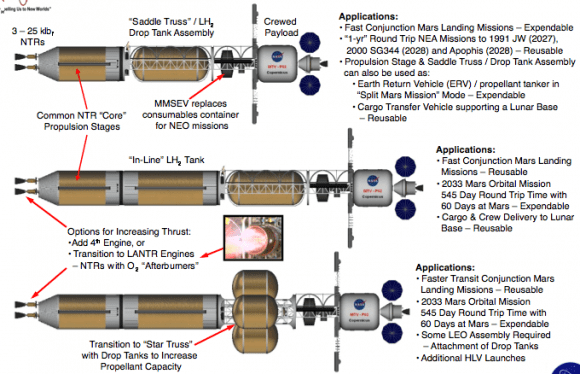
Nuclear engines were also considered for a time as a replacement for the J-2, a liquid-fuel cryogenic rocket engine used on the S-II and S-IVB stages on the Saturn V and Saturn I rockets. But despite there being numerous versions of solid-core reactors produced and tested in the past, none were ever put into service for an actual space flight.
Between 1959 and 1972, the United States tested twenty different sizes and designs during Project Rover and NASA’s Nuclear Engine for Rocket Vehicle Application (NERVA) program. The most powerful engine ever tested was the Phoebus 2a, which operated for a total of 32 minutes and maintained power levels of more than 4.0 million kilowatts for 12 minutes.
But looking to the future, Houts’ and the Marshall Space Flight Center see great potential and many possible applications for this technology. Examples cited in the report include long-range satellites that could explore the Outer Solar System and Kuiper Belt, fast, efficient transportation for manned missions throughout the Solar System, and even the provisions of power for settlements on the Moon and Mars someday.
One possibility is to equip NASA’s latest flagship – the Space Launch System (SLS) – with chemically-powered lower-stage engines and a nuclear-thermal engine on its upper stage. The nuclear engine would remain “cold” until the rocket had achieved orbit, at which point the upper stage would be deployed and the reactor would be activated to generate thrust.
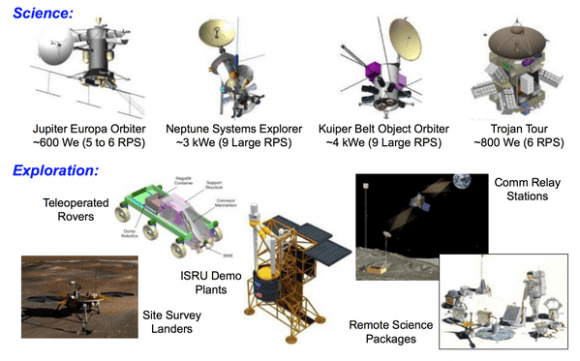
This concept for a “bimodal” rocket – one which relies on chemical propellants to achieve orbit and a nuclear-thermal engine for propulsion in space – could become the mainstay of NASA and other space agencies in the coming years. According to Houts and others at Marshall, the dramatic increase in efficiency offered by such rockets could also facilitate NASA’s plans to explore Mars by allowing for the reliable delivery of high-mass automated payloads in advance of manned missions.
These same rockets could then be retooled for speed (instead of mass) and used to transport the astronauts themselves to Mars in roughly half the time it would take for a conventional rocket to make the trip. This would not only save time and cut mission costs but also ensure that the astronauts were exposed to less harmful solar radiation during the course of their flight.
To see this vision become reality, Dr. Houts and other researchers from the Marshall Space Center’s Propulsion Research and Development Laboratory are currently conducting NTP-related tests at the Nuclear Thermal Rocket Element Environmental Simulator (or “NTREES”) in Huntsville, Alabama.
Here, they have spent the past few years analyzing the properties of various nuclear fuels in a simulated thermal environment, hoping to learn more about how they might affect engine performance and longevity when it comes to a nuclear-thermal rocket engine.
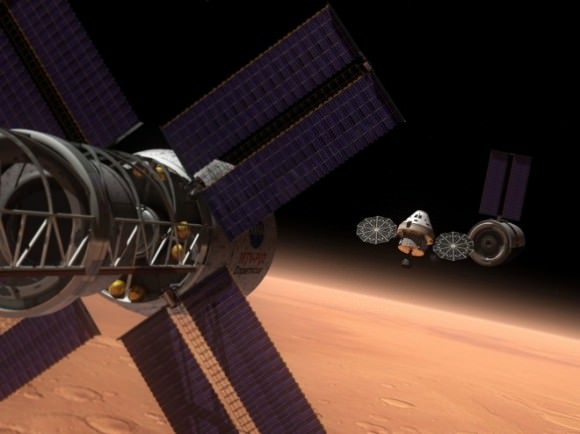
These tests are slated to run until June 2015 and are expected to lay the groundwork for large-scale ground tests and eventual full-scale testing in flight. The ultimate goal of all of this is to ensure that a manned mission to Mars takes place by the 2030s and to provide NASA flight engineers and mission planners with all the information they need to see it through.
But of course, it is also likely to have its share of applications when it comes to future Lunar missions, sending crews to study Near-Earth Objects (NEOs), and sending craft to the Jovian moons and other locations in the outer Solar System. As the report shows, NTP craft can be easily modified using modular components to perform everything from Lunar cargo landings to crewed missions to surveying Near-Earth Asteroids (NEAs).
The Universe is a big place, and space exploration is still very much in its infancy. But if we intend to keep exploring it and reaping the rewards that such endeavors have to offer, our methods will have to mature. NTP is merely one proposed possibility. But unlike Nuclear Pulse Propulsion, the Daedalus concept, anti-matter engines, or the Alcubierre Warp Drive, a rocket that runs on nuclear fission is feasible, practical, and possible within the near future.
Nuclear thermal research at the Marshall Center is part of NASA’s Advanced Exploration Systems (AES) Division, managed by the Human Exploration and Operations Mission Directorate and including participation by the U.S. Department of Energy.


